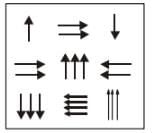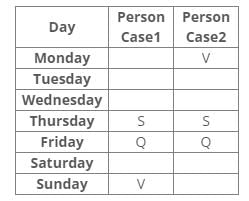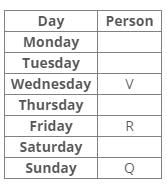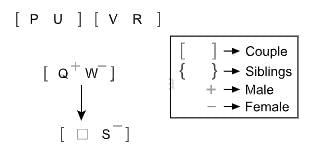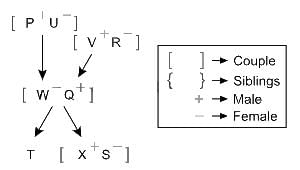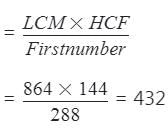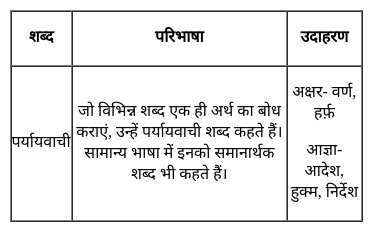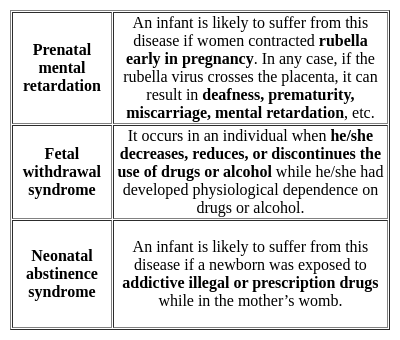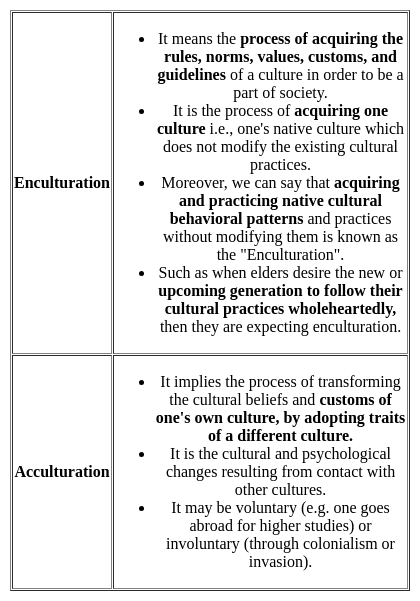DSSSB PRT Mock Test - 3 - DSSSB TGT/PGT/PRT MCQ
30 Questions MCQ Test DSSSB PRT Mock Test Series 2025 - DSSSB PRT Mock Test - 3
In the following question, which answer figure will complete the pattern in the question figure?
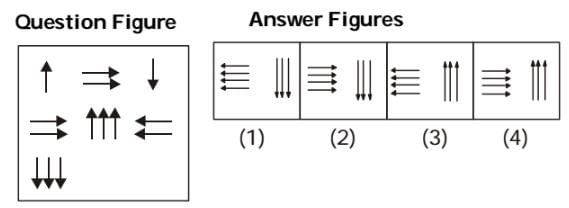

Direction: Read the given instructions carefully and answer the questions given beside.
Seven friends P, Q, R, S, T, U and V visits zoo on seven different days of the same week starting from Monday. Who visits the zoo on Sunday?
I. S visits the zoo immediately before Q, who visits on Friday. Two persons visit between S and V.
II. Only two people visits zoo after R. V visits zoo two days before R. Three people visits zoo between V and Q.
I. S visits the zoo immediately before Q, who visits on Friday. Two persons visit between S and V.
II. Only two people visits zoo after R. V visits zoo two days before R. Three people visits zoo between V and Q.
Directions: Each of the following consists of a question and two statements numbered I and II given below it. You have to decide whether the data provided in the statements are sufficient to answer the question:
Nine persons P, Q, R, S, T, U, V, W, and X belongs to a family of three generation where only married couples have children.
How is X related to S?
I. P is married to U. V is married to R. Q is the husband of W. S is the daughter-in-law of W.
II. V is the father of Q. U is the mother-in-law of Q. T is the sibling of X. T is unmarried.
How is X related to S?
I. P is married to U. V is married to R. Q is the husband of W. S is the daughter-in-law of W.
II. V is the father of Q. U is the mother-in-law of Q. T is the sibling of X. T is unmarried.
The LCM of two numbers is 864 and their HCF is 144. If one of the number is 288, the other number is :
Pairs of natural numbers whose least common multiple is 78 and the greatest common divisor is 13 are:
Fill in the blanks with the correct preposition.
The cat always sleeps ____ my bed.
Fill in the blank with the correct option.
Ms. Biethan is always in a good mood. She is _________ sad.
___________ is the ability to grasp objects with the forefinger and thumb working smoothly in opposition.
Which of the following statement is correct regarding Hebb's theory?
I. Hebb's theory suggests that repetition and practice are essential for learning.
II Hebb's theory has implications for the development of adaptive learning technologies.
Statement A: The physical domain is characterized by how humans grow and change physically, at all stages of development especially during childhood and adolescence.
Statement B:- Psychological domain focuses on adjustment of the individual to the environment.
Choose the correct option.
Choose the correct option:
Statement I: Jacksonian disorder is a kind of seizure.
Statement II: Jacksonian disorder start form one body and then affect the whole body.
According to the Declaration On The Rights of Disabled Persons (1975), which of the following rights are given to disabled persons?
i) Right to medical
ii) Right to social rehabilitation
iii) Right to education
Choose the correct option.
Statement I : Hindi and English should be the medium of instructions for children at primary stage.
Statement II: Mother tongue and multilingualism should be promoted for children at children at primary stage.
Teachers can encourage effective problem solving by :
(a) Discouraging multiple perspectives and guesses in her class
(b) Encouraging children to make intuitive guesses
(c) Writing step-by-step solution to the problem
(d) Focusing on the reproduction of textbook knowledge
Consider the incorrect statement.
(I) Ego is considered as the moral component of personality.
(II) Superego contains all the moral standards learned from parents and society.
(III) Id tries to maintain a balance between ego and super-ego.
According to Francis Burton, individuals who are regarded as critical thinkers are
I. Inquisitive
II. Reflect
III. Alert to all deception
Elders desire to make sure that the upcoming generation follows cultural practices wholeheartedly. This process is called:
(I) Enculturation
(II) Acculturation
In the context of 'Teach for India', which of the following statement is correct?
I. It was founded in 2009.
II. It was established to provide access to education for selected children in India.
The ________________ is a reflexive movement of a newborn's foot in response to the stimulation of the sole of the foot.
I. Rooting reflex
II. Plantar grasp reflex
III. Moro reflex


